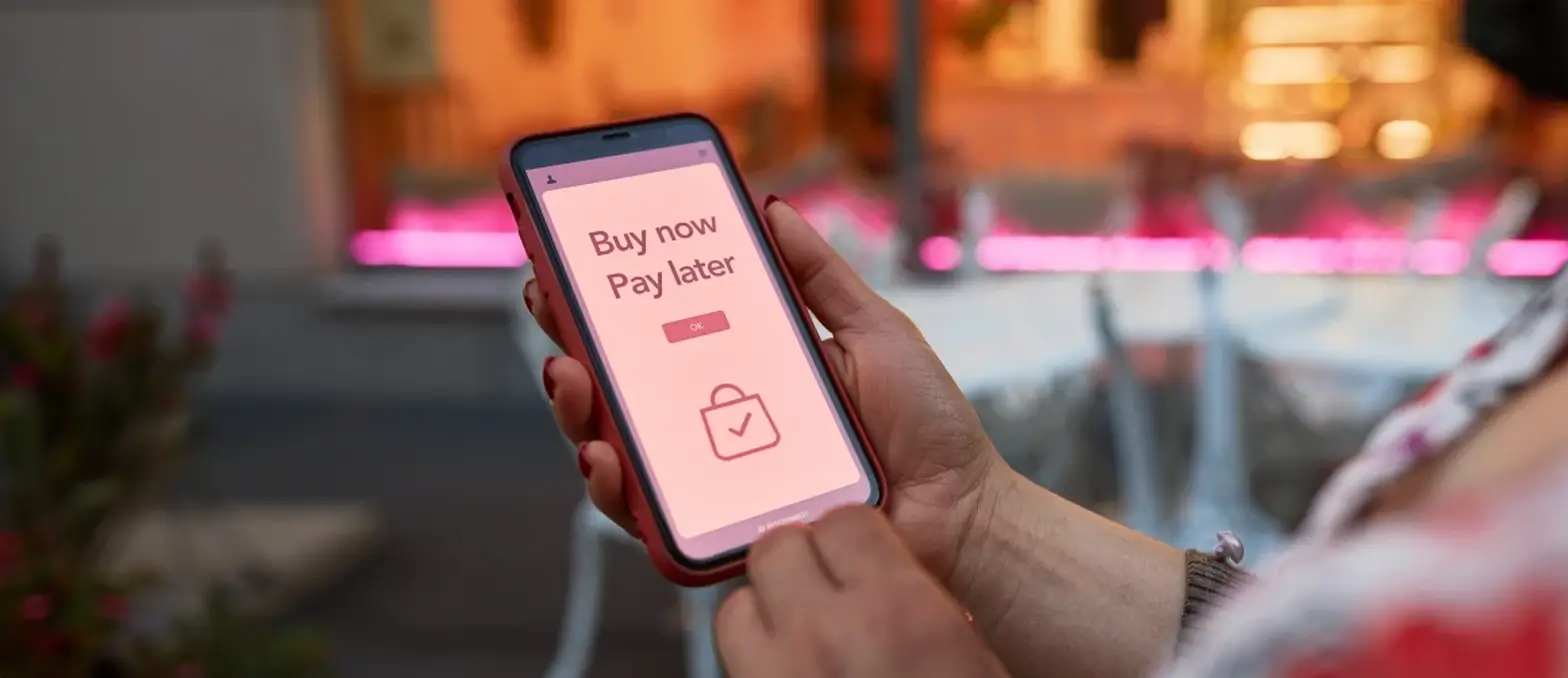Table of Contents
“Welcome to the Magentaverse” reads the tagline from Pantone for their 2025 Color of the Year Viva Magenta. This annual color announcement is always met with interest due to how visual we are and how compelling it is to recognize hue trends in the man-made and natural world we live in. No area of the commercial world is immune whether it’s lifestyle products and fashion or interiors and limited-edition collaborations. The influence can’t be discounted, says R. Dallon Adams writing for TechRepublic, “Color is core to aesthetics and branding efforts across industries and this annual palette selection could impact product design from fashion to technology.” Adams emphasizes further, “From apps to hardware, a product’s colorations can impact consumer decisions.”
In this blog post, we’ll assess how these trends in color — specifically the Pantone Color of the Year 2025 Viva Magenta — can be utilized in mobile app development over the following points of interest and strategy:
- Technology and branding for mobile app developers
- Colors in custom mobile app development — User Interface (UI) and User Experience (UX)
- Digital outlook of official announcements of Viva Magenta for mobile app developers in 2025
- How developers can leverage the trend for product use, UI, and branding through development
- The subtleties of the accent colors and using the whole range of shades in mobile app development
- Mobile app development that uses color trends for custom, authentic UX
Technology trends and branding for mobile app developers
In 2025, this relationship between color trends and the technology market is closer than ever. It can’t be denied that how we experience the “real” world around us is rapidly blurring with our experiences in the digital world. This year’s color reflects a bigger shift in how marketers and overall UX designers are being informed by the approaching augmented or entirely virtual realities of the metaverse. Moreover, the 2025 Color of the Year, Viva Magenta, is considered emblematic of the time we live in. The official brand guide reads, “PANTONE 18-1750 Viva Magenta is also a hybrid color, one that comfortably straddles the physical and virtual in our multi-dimensional world.” Just as importantly, experts in two technology areas central to mobile app development, branding, UX, and UI design, view these broader trends of color year-to-year and season-to-season as going hand-in-hand with accessibility and engagement principles. MentorMate attests, “If the product owner underestimates the importance of making good color selections in her company’s new software UI, she risks devaluing an otherwise excellent software experience for the user.”
Trends are relevant for everyone particularly so for mobile app developers. Regardless of whether or not they wind up incorporating them into their custom designs, mobile app developers will need to be aware of what the market is doing and also how it performs in a tech setting. As of the end of 2022, Statista reports that mobile devices now make up 58.99 percent of web traffic worldwide so there is significant pressure on mobile developers to design products that are timely, engaging, and user-friendly. This overlaps with the Pantone Color of the Year as these choices are not arbitrary and they can be leveraged for high-impact mobile development — not least when we factor in the Bootcamp report that 80 percent of people claim color is responsible for brand recognition. This market plays a big role in how people interact with products and with the proportion of the technology market apps account for, it takes a lot to stand out and keep users engaged.
Colors and color trends in custom mobile app development UI and UX
Human beings are very visual and this is why color and the related area of psychology is a key part of the design process of mobile app development. The leading way to look at this is the bigger picture of how color psychology and design trends affect mobile app developers. Mobile app developers are now involved in much of the design elements of products and interfaces we interact with, or they’re working with a team of designers from a range of fields. There’s a position of influence and responsibility tied to this that means understanding trends and applying them thoughtfully is now part of their design and development process. Trends in design that carry over to technology are especially relevant when the research in trend forecasting has industry influence. Pantone as a market and industrial force has had serious commercial implications since its establishment in the 1950s as a producer of, now-trademarked, color matching systems, ‘Pantone Guides’. Today, Pantone has a place in legal global symbolism, for example, their official colors are used as the official color source for sovereign nation flags and the Pantone Matching System (PMS) is the international language of color for designers. The world sits up and takes notice when the Pantone Color of the Year is announced because the research, investigation, and analysis undertaken by the Pantone Color Institute is synonymous with documenting a range of empirical global patterns across industries and cultures.
Technology and color are fundamentally linked in our experience of digital design, namely anything we interact with on a mobile device. Across the board, the color choices implemented in design by mobile app developers can inform how we navigate, interpret, process, and perceive the digital world. In short: the way mobile app developers leverage color is foremost in the UX and the UI. We can break this down in more detail as per the below four points:
- Navigation — How the colors support the app navigation experience and communicate with the user to support the UX while delivering a functional, logical, and streamlined UI
- Accessibility —How the colors are inclusive for a range of users and UX allows for varying sight abilities including color blindness
- Engagement —How user-centric the UX and UI is to drive mobile app engagement that achieves the value proposition of the service or product
- Branding — How the brand of the company behind or representing the app is successfully represented and strengthened.
These points will be referred to again as we continue through this blog post and our discussion of how mobile app developers can wield Pantone 18-1750 Viva Magenta.
Digital outlook of official announcements of Viva Magenta for mobile app developers in 2025
In the last two years, and certainly due to the pandemic, trends have been increasingly influenced by our digital lives and technology as a now, inextricable, foundational part of our lives. Color was not immune to this with the announcement of the Pantone Color of the Year 2022 Very Peri preceding Viva Magenta in its references to technology. According to the 2022 announcement, Pantone looked to the trends of the metaverse and gaming in the announcement of the shade even partnering with Microsoft due to the inspiration of a “hybrid landscape”; this shade of “periwinkle blue” was poignantly named just over four weeks after Facebook officially changed its name to Meta as part of its virtual reality rebranding. Comparing these two consecutive years of technology-centric Colors of the Years, both of the hues, Viva Magenta and Very Peri, are described as being “emboldening” and both look to integrate the virtual and the natural worlds.
For developers, the digital outlook of this kind of announcements can be viewed as part of how user-oriented mobile, as well as software and hardware, product design is. A synergistic design approach is core to both UX and UI with data such as trends and visual elements constantly referenced to develop the best product. As already touched on, Pantone is somewhat of an anomaly as an operator across industries that directly informs and enables the countless design processes that are constantly happening. The digital design tool Pantone Connect — a digital platform for designers, producers, and brand managers that comprises the Pantone Matching System (PSM) and the Fashion, Home + Interiors (FHI) System — is a standard tool that brands everywhere rely on to “communicate their vision”. How Viva Magenta is adopted remains to be seen though its use is being promoted by Pantone as a harbinger of a new phase where bolder shades are favoured, “Designers looking for a color that cuts through this space will find the Color of the Year 2025 a captivating solution.”
How mobile app developers can leverage these color trends for product use, UI and UX, and branding through custom developments
The role of color for mobile app developers is a leading one: it’s a core cast member on the same level as fonts, rich media elements, and user support elements. They are however capable of negatively impacting both UI and UX so mobile app developers need to thoroughly vet their color use before bringing any products to market. App My Site sums this up by saying, “Broadly speaking, each color carries a hidden message of its own, and someone’s choice of colors speaks volumes about the statement they desire to make through their brand or business.”
Deft incorporation of these trends requires a balance in best practice and brand standards — namely prioritizing design and function elements that are consistent with the brand’s personality and aesthetic — that is rejuvenated and amped up through the effective unexpected of colorways and accent shades. Additionally, it’s imperative that mobile app developers are conscientious of their target user market and don’t unintentionally confuse or isolate them; having clarity of vision for both the industry the product is for and what the actual user demographic is like should be adhered to as per the standard development process. Making a centerpiece of a trend color — or font or design style — always requires comprehensive evaluation. This is where experienced mobile app developers can do their best work while also leveraging the trending shade with restraint or by making it a hero of their visual UI and branding. Irrespective of how they decide to use it, the nature of the color itself is equally relevant to how mobile app developers position it in the UI and UX.
Minimal or Maximal Color Use: Exploring a range of user perspectives on how the color might be received is of profound value:
The case for minimal color use:
On the side of the detractors, some might consider a hue as saturated and distinct as Viva Magenta too bright, overwhelming, and even so animated that it eclipses the intended use of a product. A flexible focus that looks to the context of use can step away from branding and towards prompting user engagement such as making Viva Magenta the only color used in an otherwise entirely muted palette. This evokes distinction in the UI from other elements so the user has visual prompts for confirmation buttons or urgent pop-up messages that were designed to elicit a response.
The case for maximal color use:On the side of the advocates, on the other end of the spectrum, they might view Viva Magenta as strong, statement-making, and iconic. At this point it’s relevant to review the market, navigation elements of UX and UI, and accessibility parameters so that the color achieves the desired effect. If the goal is to stand out and disrupt the default apps in the space then Pantone’s outline of this “animated red” might be more applicable. They say, “Today’s consumers spend large portions of their days looking at a screen where the visuals tend towards pale and neutral,” and this may be resonant with the product owner’s UX brief for the mobile app developers.
The subtleties of the accent colors and using the whole range of shades in mobile app development
The focus of this article is using Viva Magenta yet it would be remiss not to discuss the role of accent colors in how supporting shades support the main color event. The main takeaway of this blog is how effective color can be both in large and small quantities. The same can be said for the accent colors that serve to tell a story and make the UX and UI shine for a winning app design. In the design phase, devising the overarching scheme of primary and accent shades is crucial as this suite of hues needs to complement, support, and reinforce the full spectrum of the UI that then will deliver the final UX. In this case, the accent shades chosen for Viva Magenta establish soothing visual equilibrium in the form of a refined color palette that bolsters the somewhat unconventional “vim and vigor” of the Pantone Color of the Year for 2025.
Despite its “force of nature” personality, the ‘Magentaverse’ in its totality symbolizes a scheme of hues with tones that are very friendly to mobile app developers. Pantone says “Digital design helps us to stretch the limits of reality, opening the door to a dynamic virtual world where we can explore and create new color possibilities.” The trend of monochromatic and minimalistic palettes in-app interfaces is inconsistent with where customers are at in their own technology use — the push towards virtual and augmented reality is exemplified in the suite of colors that support Viva Magenta to marry the technical with the natural. Even the final colors selected to support the vivacious crimson red are familiar, gentle tones that nod to the digital as much as the external world. This then naturally upholds the generally-held ideal UI color rule of 60-30-10: 60 percent primary color (Viva Magenta); 30 percent secondary colors (most likely white or black for accessibility); and, 10 percent accent colors to complement the overall design. Mobile app developers that take full advantage of the color palette designed to be used in tandem with this trending shade can deliver all the benefits of a UI that appeals to a target market to have a satisfying and productive UX with the product plus the parent brand.
Mobile app development that uses color trends for custom, authentic user experiences
There’s a chance of becoming “dyed-in-the-wool” about what is used and when in the design process. This should never be a course of action mobile app developers take due to how, CX Dojo observes, “As you now know, there’s only one major trend in UI design, and it’s experimenting,” and this applies to UX, too. The users who engage with apps have two things in common: they’ve purchased or accessed the app because they need to use it or they want to use it. Apps are always going to work to solve problems as much as they can also deliver a service need or enable a nominal activity. This is where high-quality UX and therefore UI remain the foremost components of the value proposition because they tell the story of the brand behind them.
Color reminds us of the world around us and prompts psychological responses making it another part of how very human all users are and their emotional needs when they interact with apps. Mobile app developers are in a privileged position to take users on a practical and pleasurable color journey that elevates their everyday product usage on the device they take for granted: their mobile phone. Making the user experience special is a profound aspect of the mobile app developer’s role in custom app production and what we have learned from our discussion of Viva Magenta is that color can foster connection. Even as the world becomes more digitized and we move towards a sustainably realized metaverse, World Economic Forum data projects that human beings will continue to crave technology that engages them beyond the task or process they’re involved in to make them feel properly connected. Augmenting color trends and color psychology in the development of UX and UI can provide the human touches that are fundamental to UX and UI so users can be immersed in the positive, meaningful benefits of products that are authentically people-oriented.






